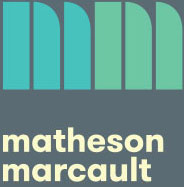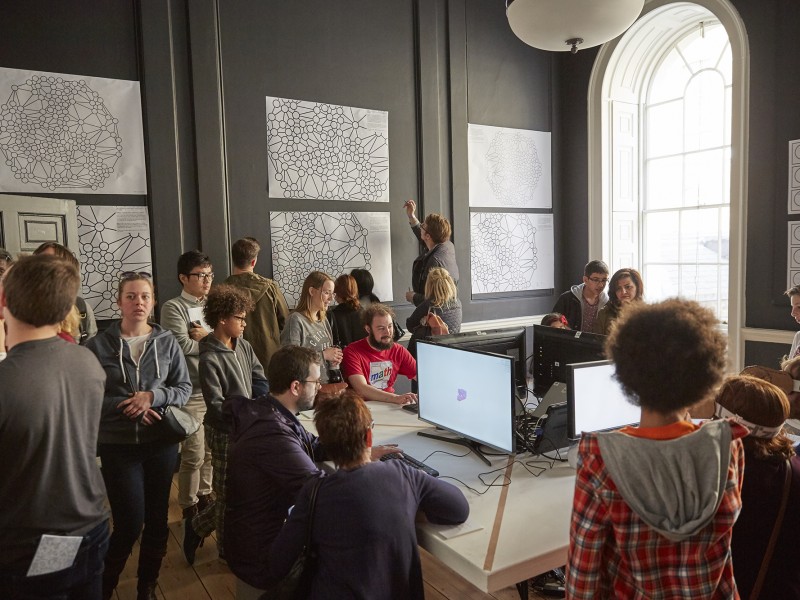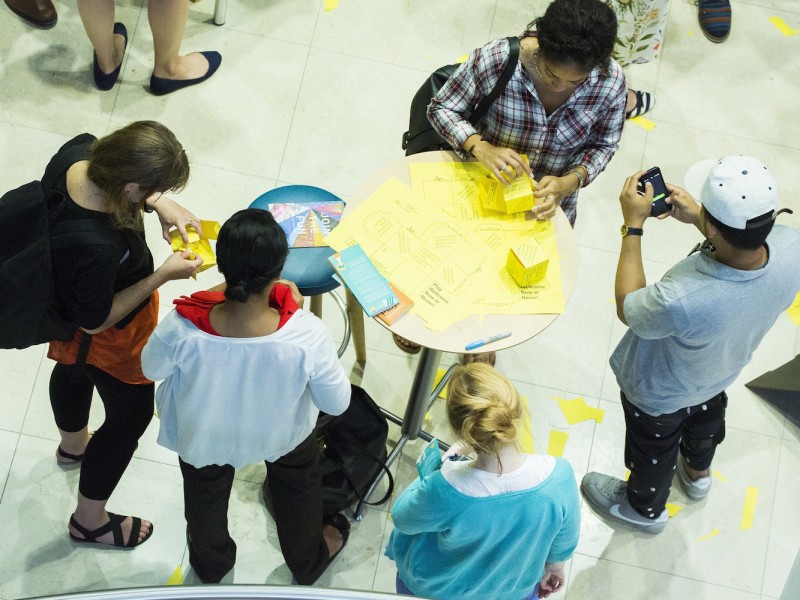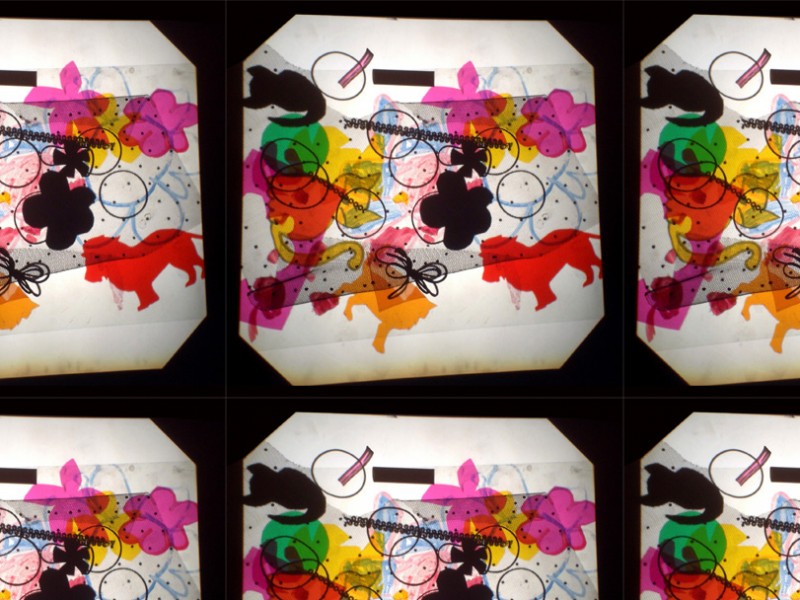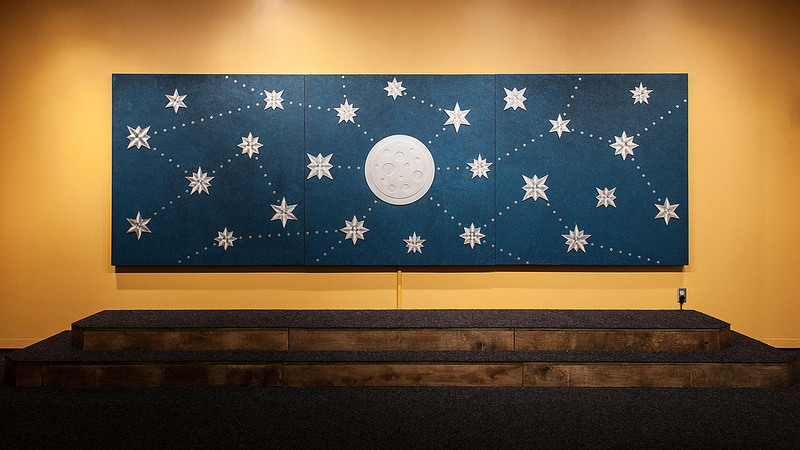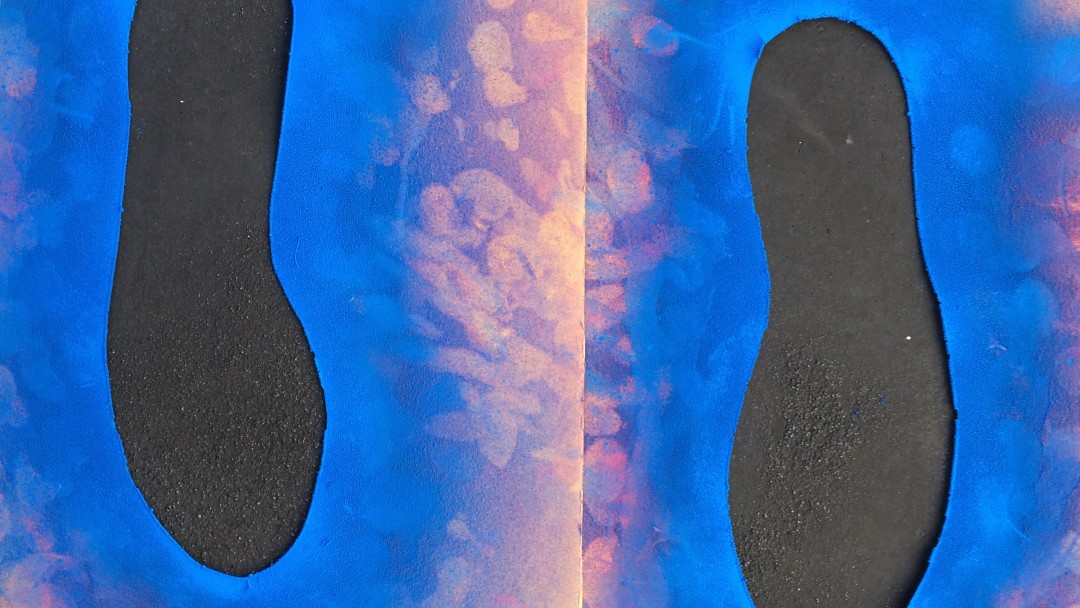Are people more likely to hop along a red hopscotch course, or a blue one?
Would they prefer to follow a straight set of footprints or one with a big loop-the-loop?
If you put a telescope on a swivelling stand, how many people will stop to peer through it? If you stick an arrow to the ground, will people look to see what it’s pointing at? If they do look, how many of them will stop and follow it?
Matheson Marcault is really interested in cultivating play in public space – but we don’t often get a chance to dig into why some interventions work and others don’t, to watch how people behave in response to different installations and see how tiny changes affect their participation. So we’re really excited to be working on a research project that starts to investigate exactly this: what minimal interventions can really make people play in public space? What subtle changes can increase or decrease the level of their engagement?
We’re doing this at King’s College London, as research for One Easy Step, an installation we’ll be making for the upcoming Arts and Humanities Festival in October.
We’ll be trying out different theories and different super-simple installations in the Quad at the Strand campus for the rest of the month, and watching and writing down exactly what happens each time we change something, add something new, take something away. And then we’ll be writing up everything we find out, and creating a report to share the things we’ve found out.
So far we’ve found out strange little things like:
- 95% of the people who play are in pairs or groups. Usually the whole group doesn’t play – it’s just one person – but that one person won’t play if they’re on their own.
- People on their own will, however, do a weird half-play walk – following the line of a hopscotch course but not jumping, for example, or stepping firmly and deliberately in the squares in a way that could be coincidence, but clearly isn’t.
- The same hopping-and-jumping course laid out as hopscotch boxes or as footprint shapes gets many, many more people engaging with the hopscotch than the footprints.
- Nobody cares what colour a trail of footprints is – except for smaller kids, who really really do.
…and as we continue to change the setup we hope to find out a lot more.
Alongside our practical research, we’re talking to playground designers, installation artists, curators, architects and other people with an interest in the nitty-gritty of playful public space – finding out what they’ve discovered about getting people to play – and putting some of those interviews online. We’ll also be doing a quick survey of the academic literature in this area – there’s a lot out there, but for practitioners it’s often inaccessible (either literally or metaphorically).
We’ll be summarising everything we find out through the process – interviews, reading and watching from our sinister observation tower – into a report at the end. And we’ll be trying our best to make the things we discover useful not just for us but for other people making playful interventions and installations in public space – so if you have a project that you’ve collected interesting stats on, or observations that you’ve written down or even just noticed, and you like to share them, do please drop us a line.
